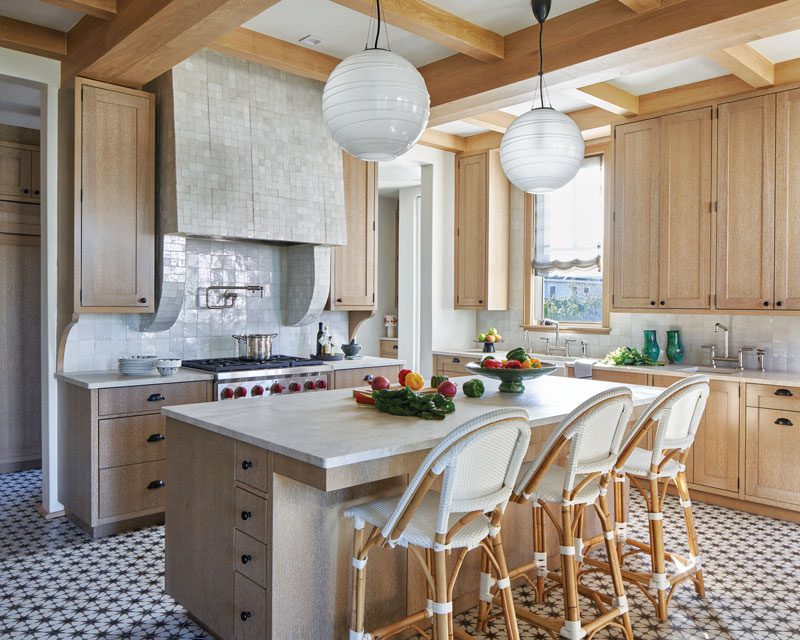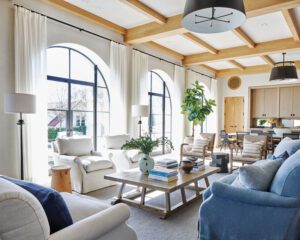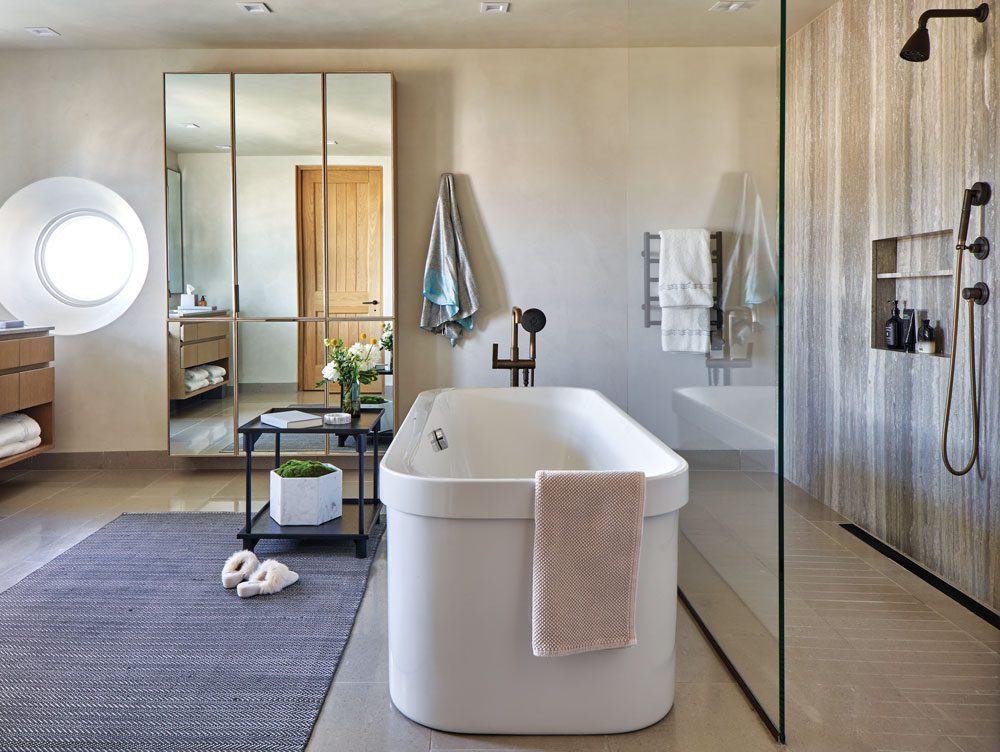International Intrigue
Writer Marirose Krall | Photographer Marco Ricca | Location Monmouth County, NJ | Architectural and Interior Design William McIntosh Design | Architect of Record Robert AdlerA Monmouth County, New Jersey, home has multicultural flair
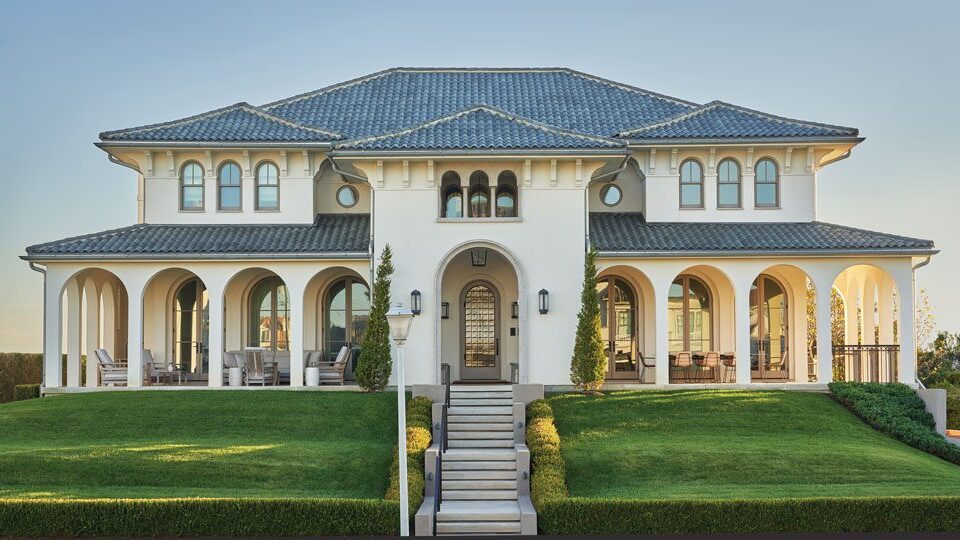
“The architect of record, Robert Adler, is a great guy,” says designer William McIntosh, who handled architectural and interior design for this project. “He’s local to the area and he was invaluable as far as the structural heavy lifting and the permits process. He’s a great collaborator.”
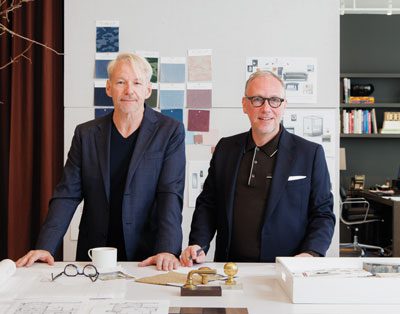
Left: William Mcintosh President | Right: Martin Raffone Partner & Creative Director William McIntosh Design 212-807-8030 | WilliamMcIntoshDesign.com
‘It was a ‘tear-it-down-to-the-bones’ kind of project,” says William McIntosh, principal of Manhattan-based William McIntosh Design. He and partner and creative director Martin Raffone, a color and materials specialist and stylist, created a sophisticated aesthetic, inside and out, that was inspired by extensive world travels — both his and the clients’.
Design New Jersey: You call the style of this house Italian Renaissance Revival. What elements of that style can be seen here?
William McIntosh: The most prominent design element is the arcade across the front façade at the porch level, which involves a series of simplified columns. The bracketed eave line is also very much an Italianate detail, as is the stucco exterior. The hip roof covered in clay tile is another nod to the style’s Mediterranean roots. In addition, there’s a three-part colonnade above the main entry archway. It’s super stylized, and doing it in marble—which was very common in Italian Renaissance architecture—adds a certain richness to it.
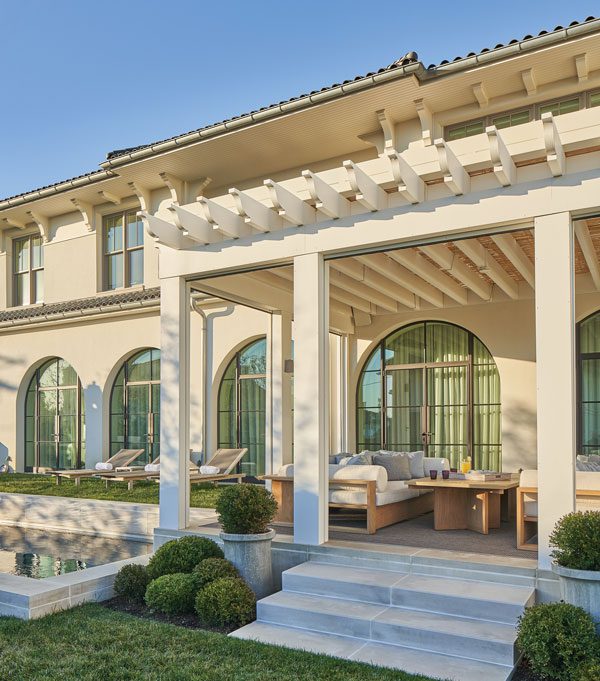
The home’s back patio features a pergola-covered sitting area. A 12-by-24-foot lap pool (left) hits the spot on a sultry summer day.
DNJ: How did the topography of the lot and the style of the home inform the landscape design?
WM: The house sits very high above the street — about 10 or 12 feet. Because of that, the project involved grading the site to transform it from a steep incline to a softer, tiered slope. We then installed a 2-foot retaining wall at the sidewalk and a series of steps and landings corresponding to the tiers of the lawn to produce a more dramatic entrance. As far as the actual plantings, we chose items to complement the look of the house. We selected the evergreens on either side of the front entrance because they are similar to Italian Cyprus trees, which would not do well in the Northeast United States.
DNJ: How did you alter the interior layout within the original footprint?
WM: Essentially, we rebuilt the entire house. We were required to maintain the massing of the structure, but we took the house down to the studs and completely reconfigured the interior. We raised the ceiling height on the first floor by 30 inches and raised the roof 30 inches. We lined up the main living spaces — living room, dining room and lounge — along the rear of the house. The kitchen was relocated from the rear to the front and is now adjacent to a dining terrace where the clients enjoy having breakfast outdoors. The center entry foyer was redesigned as a two-story space with the staircase winding behind the walls around three sides to the second-floor hallway. The steel-and-glass windows in the stairwell and landings look down to the entry.
DNJ: What was the inspiration for the ceiling treatments found throughout the first floor?
WM: If you were in any great old house in the countryside of France or Italy, you’d see exposed beams on the ceiling. It’s the structure of the house that you’re seeing, and it gives the house character. It adds a nice warmth and a material element to the spaces as well, as opposed to a Sheetrock ceiling.
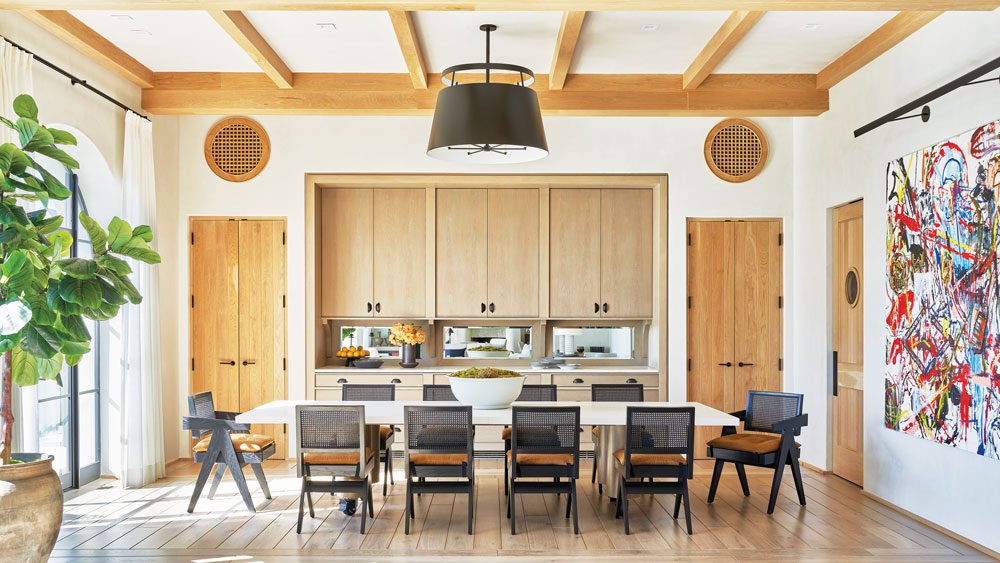
“The dining table is a design of ours,” McIntosh says of the cast-concrete-topped piece, which features caster legs for ease of movement. “The chairs are Chandigarh chairs designed by Pierre Jeanneret for government buildings in Chandigarh, India, in the 1950s. They’re stained mahogany with woven cane seats and backs. The two closets and the door leading to the kitchen (with the round window) feature antiqued black hardware that adds a dressed-down feel that’s more country than city.
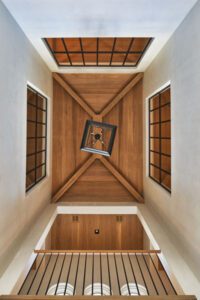
The pitched ceiling above the entry hall is clad in wood and features a lantern visible through the steel-and-glass windows of the upper hallway.
DNJ: How do the additional wood accents, which figure prominently throughout the interiors, reinforce the multicultural aesthetic?
WM: The white oak elements are a nod to components found in the architecture in various countries. The dining room, for instance, is punctuated with decorative elements that not only reiterate the look of the wood beams found on the ceiling but also have significance on their own. The return air vents near the ceiling are reminiscent of a Roman grille or Moroccan Mashrabiya turned-wood lattices.
DNJ: What is the interior aesthetic?
WM: The interiors are an amalgam of many influences drawn from everything that I know about Italian, French and Moroccan historical architecture. The house features many elements inspired by my travels. For instance, I’ve spent a lot of time in Morocco — we had a house in Marrakesh. So we brought in Moroccan tile for the kitchen floor and backsplash. The range hood is glazed Moroccan Zellige tile. It’s hand cut into those sizes, which makes it very irregular and gives it a rustic quality.
DNJ: How did your relationship with the homeowners contribute to the success of this project?
WM: This renovation was a big project for them, but we’ve worked with this family many times. We’ve seen their kids grow up. It’s nice to work with people over a 20-year period. We understand their needs and wants, and they understand our process. They travel often, like I do, so we were very much on the same page. It’s great when you can share references in conversation. That makes the project flow very smoothly.
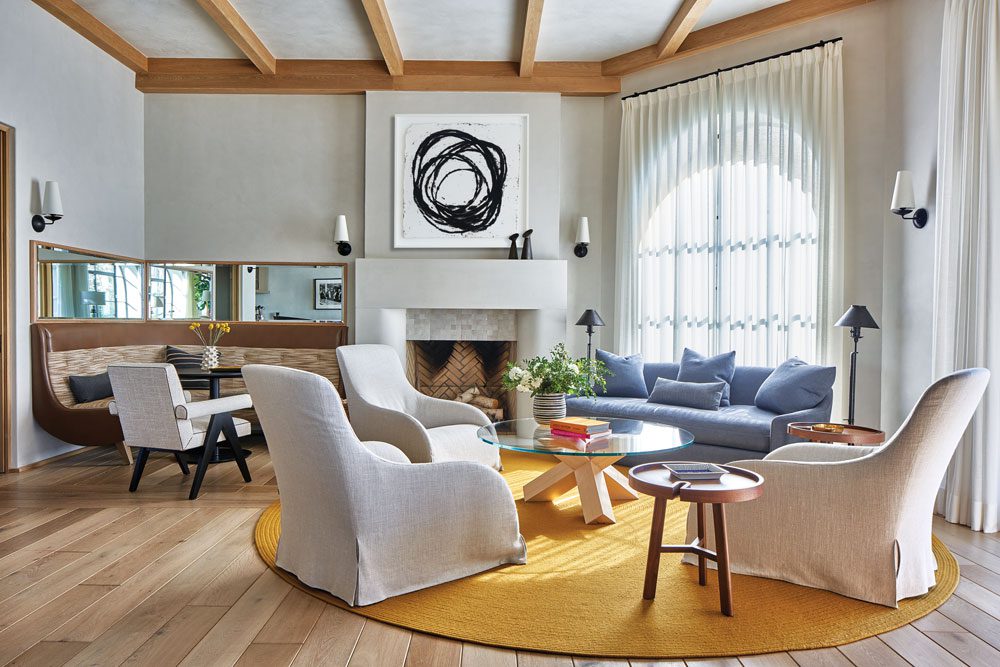
The homeowners requested a banquette in the lounge where they could sit for food and cocktails. “Everybody loves a banquette,” McIntosh says. “That’s what this room is about, everyone gathering.”

